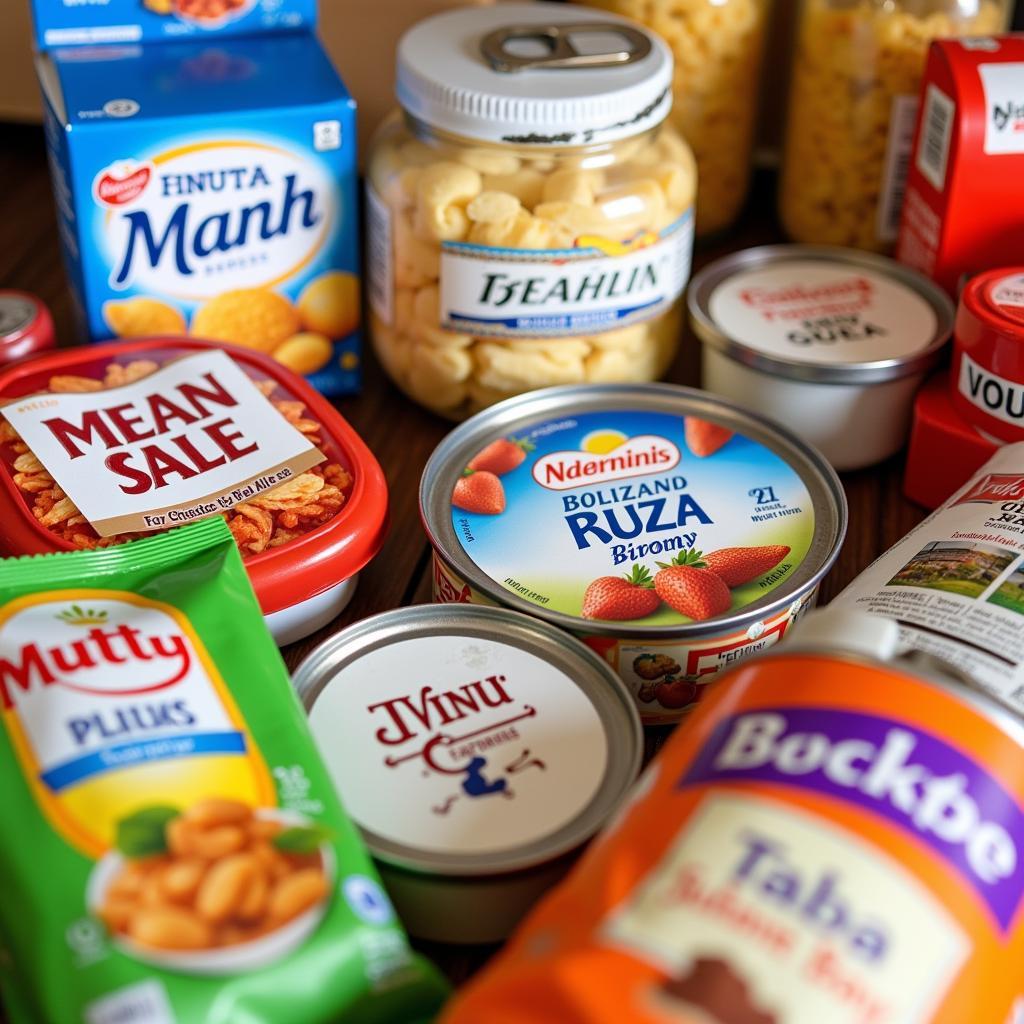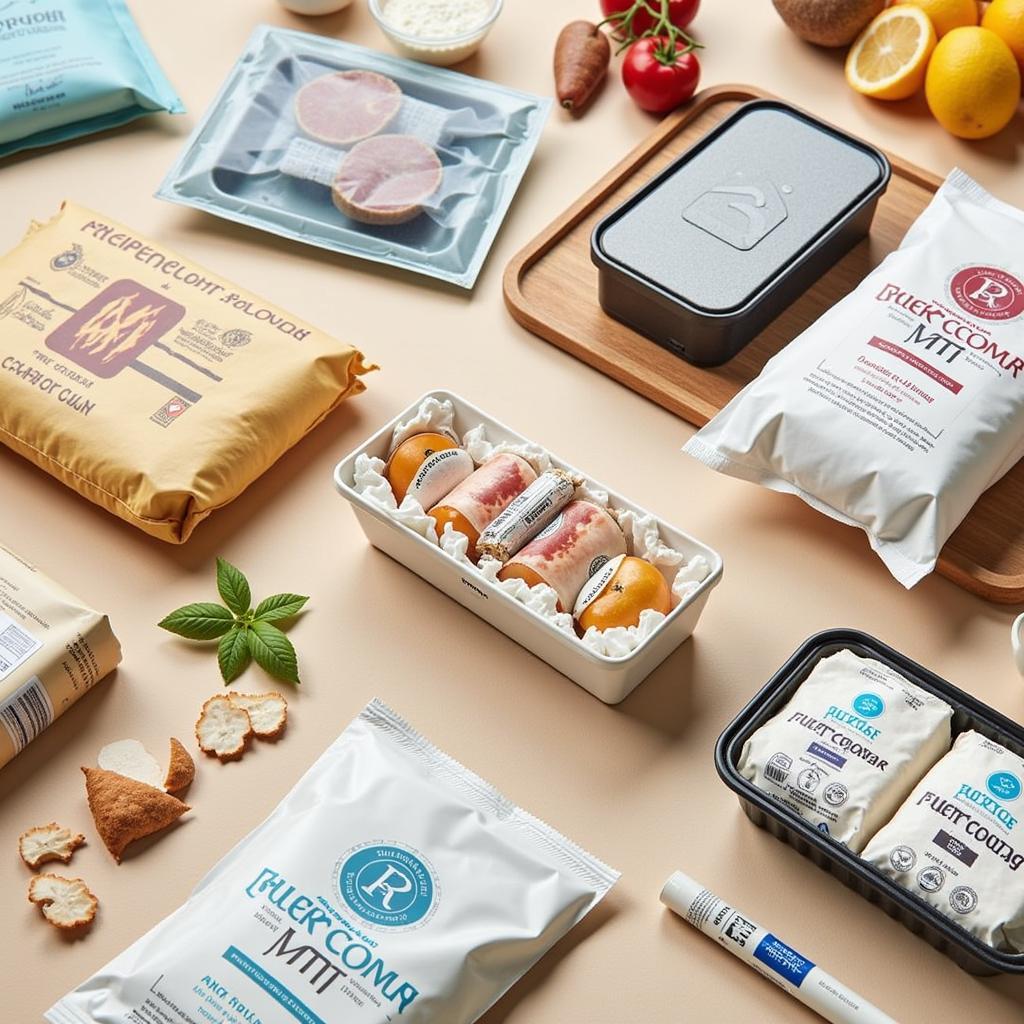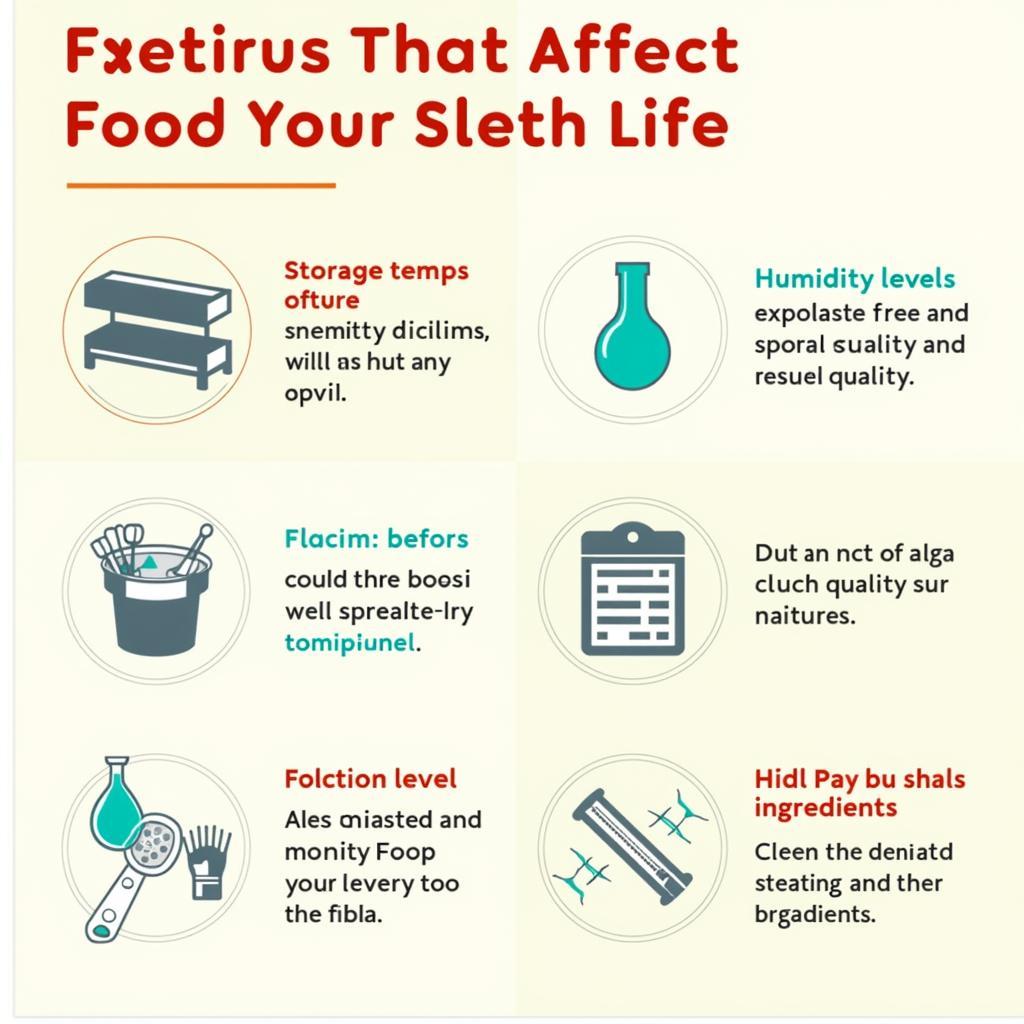When it comes to enjoying our favorite foods, the last thing we want is to discover they’ve gone bad before their prime. That’s where understanding Food Packaging Shelf Life comes in. This crucial aspect of food safety and quality ensures that what we consume is both delicious and safe.
Decoding the Dates: “Best By,” “Use By,” and More
 Food Packaging with "Best By" and "Use By" Dates
Food Packaging with "Best By" and "Use By" Dates
Navigating the world of food dates can feel like deciphering a secret code. “Best by” dates indicate when a product is at its peak quality, while “use by” dates signal the last recommended day for consumption. “Sell by” dates are primarily for retailers, indicating when a product should be sold to ensure it’s still fresh for consumers.
While these dates offer guidelines, remember they’re not set in stone. Factors like storage conditions and individual product variations can influence actual shelf life.
The Science Behind Extending Freshness
 Food Packaging Materials for Optimal Freshness
Food Packaging Materials for Optimal Freshness
Food packaging technology has come a long way in extending the shelf life of our groceries. From vacuum sealing to modified atmosphere packaging (MAP), these innovations help maintain freshness by controlling oxygen levels, moisture, and microbial growth.
Let’s take a look at some common packaging methods and their impact on shelf life:
- Vacuum packaging: By removing air, this method slows down the oxidation process that causes food to spoil, particularly effective for dog food sausage.
- Modified Atmosphere Packaging (MAP): This technique involves replacing the air inside packaging with a customized mix of gases, often nitrogen or carbon dioxide, to inhibit bacterial growth and preserve freshness.
- Active packaging: This innovative approach incorporates components within the packaging itself to interact with the food or the surrounding environment, such as oxygen absorbers that prevent spoilage.
Factors Influencing Food Packaging Shelf Life
 Factors Impacting Food Shelf Life
Factors Impacting Food Shelf Life
Beyond packaging technology, several external factors can impact the shelf life of your food:
- Storage Temperature: Maintaining appropriate temperatures is crucial. Refrigeration slows down bacterial growth, while freezing can significantly extend shelf life.
- Humidity: Excess moisture can lead to mold growth, while overly dry conditions can cause foods to become stale.
- Light Exposure: Light can degrade certain nutrients and affect the quality of some foods.
- Initial Product Quality: The freshness and quality of ingredients at the time of packaging play a significant role in determining overall shelf life.
“The quality of the initial ingredients is like building a house on a strong foundation. If you start with the best, you’re setting yourself up for success,” says renowned food scientist Dr. Anna Lee. “Combined with proper packaging and storage, you can significantly extend the enjoyment of your favorite foods.”
Maximizing Shelf Life at Home
Here are some practical tips to help you maximize the shelf life of your groceries:
- First In, First Out (FIFO): Organize your pantry and refrigerator so that older items are used before newer ones.
- Proper Storage: Store perishable foods like dairy, meat, and produce in the refrigerator, and keep dry goods in cool, dark, and dry places.
- Avoid Cross-Contamination: Store raw meats separately from other foods to prevent the spread of bacteria.
- Follow Packaging Instructions: Pay attention to any specific storage instructions provided on food packaging.
Food Packaging Shelf Life and Sustainability
As we become increasingly conscious of our environmental footprint, the sustainability of food packaging is a growing concern. Choosing eco-friendly packaging options like biodegradable or compostable materials can help minimize waste.
Furthermore, understanding shelf life and reducing food waste go hand in hand. By properly storing food and utilizing leftovers creatively, we can minimize unnecessary waste and make the most of our resources.
Conclusion
Food packaging shelf life is a multifaceted aspect of food safety and quality, influencing both the enjoyment of our meals and the sustainability of our food choices. By understanding the factors that affect shelf life and adopting best practices for storage, we can savor the freshness of our food for longer while minimizing waste.
FAQs
- Can I freeze food in its original packaging?
While freezing can extend shelf life, not all packaging is freezer-safe. Check for freezer-safe symbols on packaging or consider transferring food to freezer-safe containers.
- Is it safe to eat food past its “best by” date?
“Best by” dates primarily indicate peak quality. While food might not be at its freshest after this date, it’s usually safe to consume if stored properly.
- How can I tell if food has gone bad?
Obvious signs of spoilage include mold growth, off smells, or changes in texture. When in doubt, it’s always best to err on the side of caution and discard the food.
- What is the best way to store bread to prevent mold?
Store bread in a cool, dry place, ideally in a bread box or paper bag. Avoid storing bread in the refrigerator, as this can cause it to dry out faster.
- What are some eco-friendly food packaging options?
Look for packaging made from recycled materials, biodegradable plastics, or compostable materials like sugarcane pulp or bamboo.
Looking for more insights into food and pet food? Check out these articles:
Need assistance with food packaging shelf life or have any questions? We’re here to help!
Contact us at:
Phone Number: 02437655121
Email: minacones@gmail.com
Address: 3PGH+8R9, ĐT70A, thôn Trung, Bắc Từ Liêm, Hà Nội, Việt Nam
Our dedicated customer support team is available 24/7 to assist you.